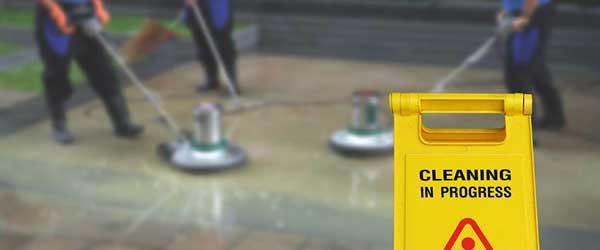Our experts weigh in on microfiber, surfactants and vinegar.
“Are there different grades of microfiber?”
A: Yes, there are many different grades of microfiber products and the performance and durability varies greatly. Microfiber cleaning products offer many advantages over cotton. They are more durable, reduce cleaning times, reduce the need for chemicals, and they remove and capture more soil than comparable cotton alternatives. However, not all microfiber products are created equal, and use of the term “microfiber” alone does not imply superior cleaning efficacy. One study by Dr. Ginny Moore at the University of London demonstrated that by testing six different microfiber wipers you achieved six completely different results. According to The Journal of Hospital Infection (01/01/2007; 64(4):379-8), performance is affected by many factors the most important of which is the actual grams of microfiber yarn used in each meter of material. Some so-called “economy” products run as low as 200 g/M (not necessarily reflected in the price) while others exceed 300 g/M – the higher the g/M the better the overall performance. The double-sided terry-type microfiber wiper is ideal for virtually every application whether for glass or mirrors, carpet spot cleaning, kitchen and bath. The one application where use of a different type of wiper is recommended is for high-polished reflective surfaces. For these products use a non-terry product that has been tested as safe-to-use on a reflective or coated surface.
— George Clarke, CEO and UMF Corporation
“Does vinegar kill germs?”
A: Yes. However, when you’re talking outcomes, things get complicated. Does vinegar kill enough germs to sanitize or disinfect? These terms are regulated by government agencies. According to the US Food and Drug Administration (US FDA), “‘Sanitization’ means the application of cumulative heat or chemicals on food-contact surfaces that, when evaluated for efficacy, is sufficient to yield a reduction of 5 logs, which is equal to a 99.999% reduction, of representative disease microorganisms of public health importance.” Disinfection, though, is defined by the US Center for Disease Control (US CDC), as “a process that eliminates many or all pathogenic microorganisms, except bacterial spores, on inanimate objects….Factors that affect the efficacy of both disinfection and sterilization include prior cleaning of the object; organic or inorganic load present; type and level of microbial contamination; concentration of and exposure time to the germicide; physical nature of the object…presence of biofilms; temperature and pH of the disinfection process…” The US FDA and US Environmental Protection Agency regulate disinfectants and sanitizers based on this definition. Jason Marshall of the Toxics Use Reduction Institute (TURI), offers the findings of TURI’s study, which sprayed 100% white distilled vinegar onto a stainless steel surface on which E. coli and S. aureus bacteria were present. “Contact times of 1, 3 and 5 minutes were observed. Disinfecting was achieved by spraying surface with vinegar.”
For more information on TURI, click here.
Derek Christian is the owner of My Maid Service with locations in Cincinnati, OH and Dallas, TX, as well as a business coach through Cleaning Business Builders and publisher of CleaningBusinessToday.com. Derek is now an investor in several cleaning companies including My Maid Service Dayton and Real World Services Columbus. Derek is also a consultant for industry leaders Marvelous Maids and Castle Keepers.






